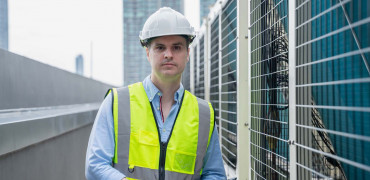In June 2023, the Committee on Climate Change made its most recent Report to Parliament on how far the UK has progressed towards its 2050 goal of Net Zero national greenhouse gas emissions.
The report sets out a ‘good news and bad news’ story. The good news is that the UK has reduced its carbon footprint over the past 30 years, meeting all its interim Carbon Budgets, including the latest, which ended in December 2023.
A significant proportion of that progress relied on the greening of our electricity generation. Dropping coal from the mix and shifting from gas-powered generation to wind has driven our Net Zero success.
The bad news is that we cannot rely on that process to take us much further.
To get to Net Zero 2050, the UK must keep cutting carbon emissions at around four times the current rate. As a result, every sector in our economy will have to take action on carbon, including the built environment.
Maintenance can help optimise energy use (operational carbon) and extend product life (embodied carbon)
Pushing for reductions
Fortunately, this is no surprise to the construction and property sectors. For several years, organisations such as CIBSE, RIBA, RICS, BRE, and the UK Green Building Council have pushed for more significant carbon reductions. They’re often well ahead of government targets in their proposed standards, particularly when measuring and reducing whole-life carbon in buildings.
The carbon footprint of a building can be split into two parts. Operational carbon is mainly produced from the use of electricity in buildings. This leads to emissions from generation. Operational carbon of this type can be reduced by purchasing energy from renewable generators or on-site generation from PVs, for example. It can also be reduced by improving energy efficiency.
Facilities teams have an essential role in reducing operational carbon by focusing on the energy efficiency of buildings and by optimising the energy performance of cooling, heating and ventilation systems.
Embodied carbon
The other type of carbon in buildings is Embodied. This is the sum of carbon produced when all the materials and equipment in the building are manufactured, transported, and installed.
It’s a complex calculation that means manufacturers of products from concrete and steel to ductwork and AHUs must be able to trace the carbon along their entire supply line.
It is challenging to reduce the embodied carbon of an existing building since most of that carbon is inherent in the structure, façade and foundations.
But CIBSE has highlighted that MEP (mechanical, electrical and plumbing) can make up to a third of the embodied carbon in new buildings – and up to 75% in existing buildings.
So, facilities teams can have a critical role in managing and even helping to reduce embodied carbon in a building when they specify this equipment. While walls and floors will generally remain in place, building services equipment will be replaced throughout the building’s lifetime. Each upgrade has an embodied carbon impact that FM teams must consider.
Product declarations
Manufacturers are now producing Environmental Product Declarations (EPDs) for their products so that specifiers can find information on embodied carbon. Where these are unavailable, CIBSE’s TM65 (Embodied carbon in building services: a calculation methodology) provides an agreed approach to calculating the embodied carbon for products.
Mitsubishi Electric has already been working on producing EPDs for its products, and our team can offer advice and assistance on making choices about the products that provide the right carbon profile for your project. For example, much of our technology now uses low-GWP refrigerant, contributing to lower embodied carbon.
In addition, our Service & Maintenance engineers can work with you to help make a lifetime plan for your essential equipment, such as chillers. The right maintenance schedule can help optimise chiller energy use (operational carbon), reduce the likelihood of refrigerant leakage, and extend product life (embodied carbon).
With more property clients focusing on reducing their whole-life carbon footprint, the facilities team is set to take a greater role in achieving this. Building services equipment includes items directly linked to operational and embodied carbon, giving them a crucial place in the carbon reduction toolkit.
Working with service and maintenance teams who can support a carbon-focused approach will help you to tackle the carbon challenge we all face.
Kris Swiderski is Head of Service and Maintenance




